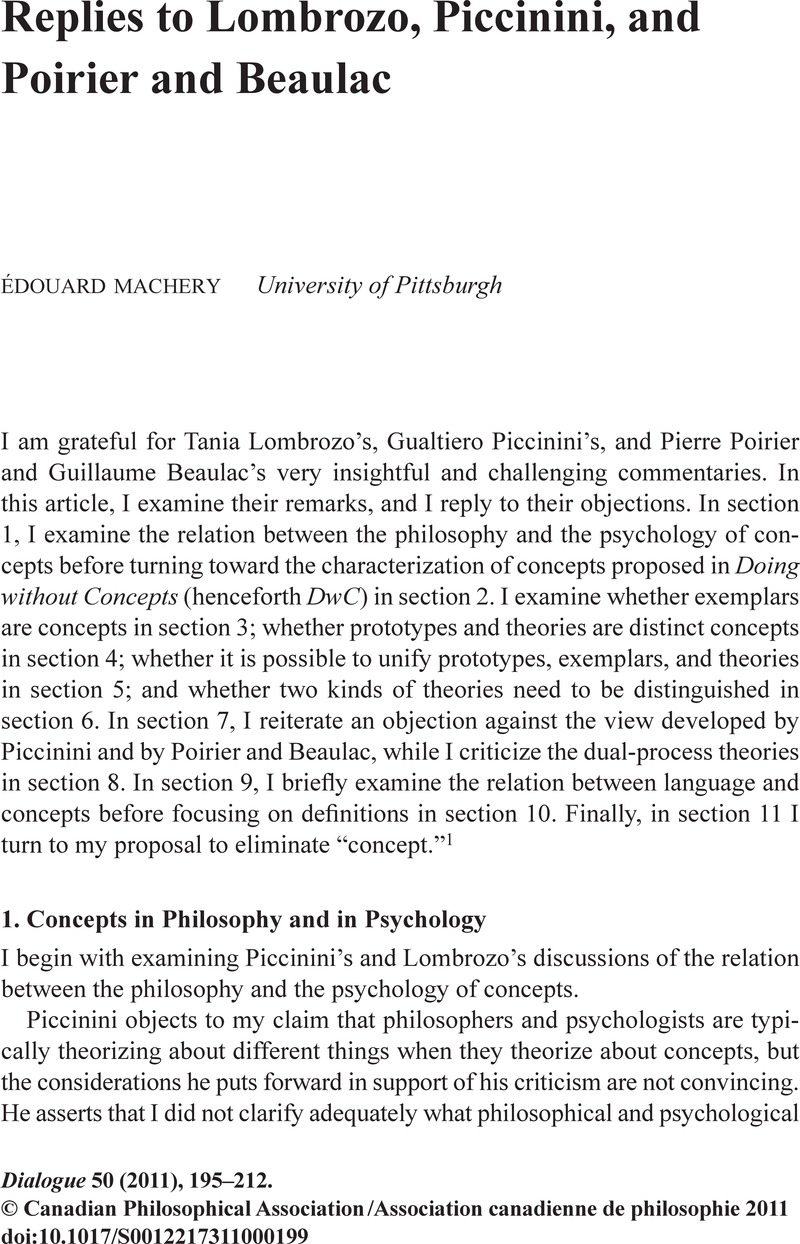Crossref Citations
This article has been cited by the following publications. This list is generated based on data provided by Crossref.
McCaffrey, Joseph
and
Machery, Edouard
2012.
Philosophical issues about concepts.
WIREs Cognitive Science,
Vol. 3,
Issue. 2,
p.
265.





